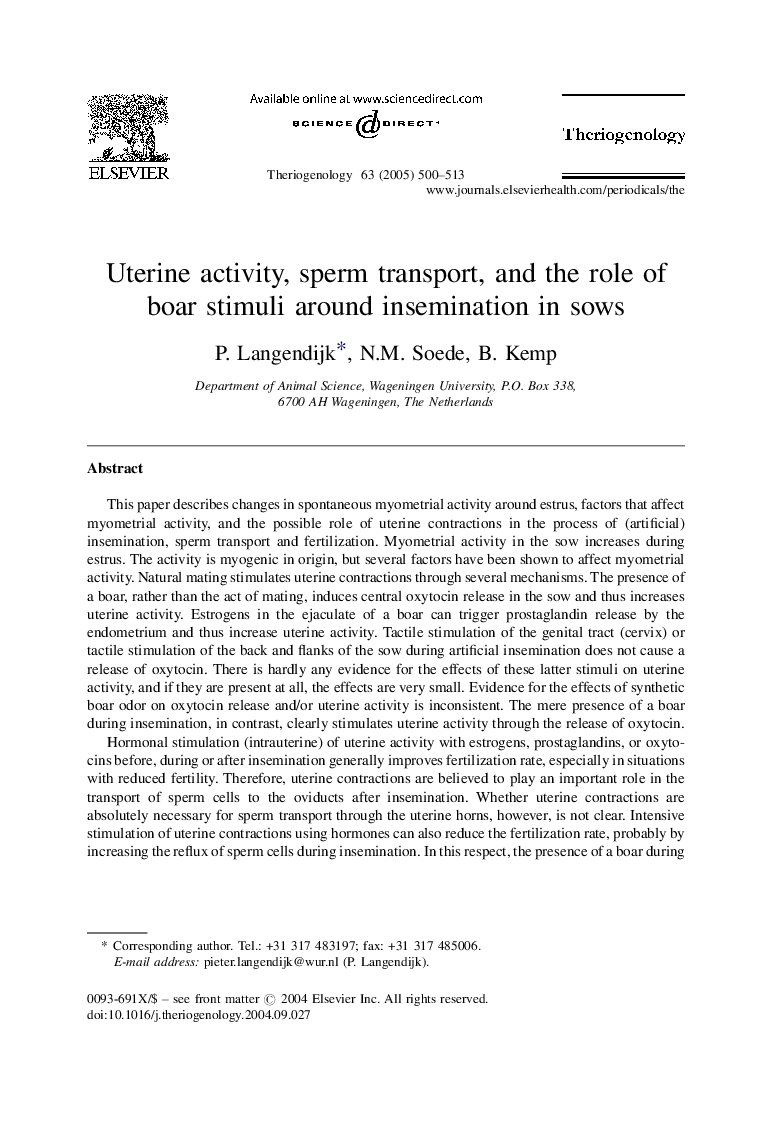| Article ID | Journal | Published Year | Pages | File Type |
|---|---|---|---|---|
| 10893351 | Theriogenology | 2005 | 14 Pages |
Abstract
Hormonal stimulation (intrauterine) of uterine activity with estrogens, prostaglandins, or oxytocins before, during or after insemination generally improves fertilization rate, especially in situations with reduced fertility. Therefore, uterine contractions are believed to play an important role in the transport of sperm cells to the oviducts after insemination. Whether uterine contractions are absolutely necessary for sperm transport through the uterine horns, however, is not clear. Intensive stimulation of uterine contractions using hormones can also reduce the fertilization rate, probably by increasing the reflux of sperm cells during insemination. In this respect, the presence of a boar during AI seems more adequate, as only sows with a low level of uterine activity show an increase in uterine activity in response to this stimulus.
Related Topics
Life Sciences
Agricultural and Biological Sciences
Animal Science and Zoology
Authors
P. Langendijk, N.M. Soede, B. Kemp,
